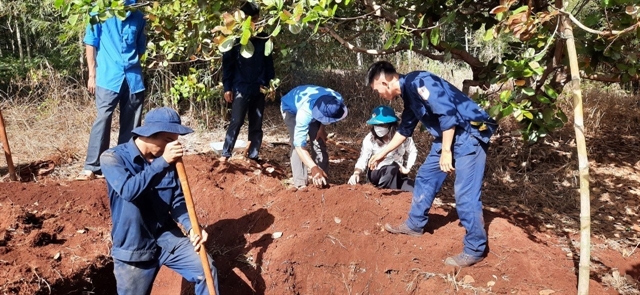 Society
Society


|
| The Military Command of Bình Phước Province gathers two sets of remains of martyrs in the cashew garden area in Núi Gió Hamlet in Hớn Quản District. — VNA/VNS Photo |
HÀ NỘI — Việt Nam Academy of Science and Technology and the International Commission on Missing Persons have agreed on a plan to improve the capacity of identifying remains of fallen victims of the war with America.
The plan, which was signed yesterday in Hà Nội Associate Professor Phí Quyết Tiến, deputy director of the academy’s Institute of Biotechnology and Patrick White, programme executive director of the International Commission on Missing Persons, will run until the end of 2024.
The ceremony was witnessed by Tim Rieser, a senior foreign policy advisor to Senator Patrick Leahy – who is a strong supporter of cooperation projects between Việt Nam and the United States in war consequences’ remediation; Aler Grubbs, mission director of the United States Agency for International Development (USAID) in Việt Nam; and Ritu Tariyal, director of the Reconciliation and Inclusive Development Office, USAID in Việt Nam.
Professor Chu Hoàng Hà, deputy president of the Việt Nam Academy of Science and Technology said that the academy’s DNA Testing Centre is identified as the focal point for the implementation of international cooperation activities in the field of identification of remains during the war.
Outlined in the plan is optimising technology to separate DNA from ancient bone samples, developing analytical techniques and applying next-generation sequencing (NGS) technology to identify the missing people in the war on a large scale, he said.
The direction is believed to be suitable for the current conditions of DNA testing units in Việt Nam, he said.
Hà said that the event represents the cooperation and cohesion after the war between agencies of the two governments of Việt Nam and the United States in the spirit of “closing the past, moving towards the future”.
Patrick White said the plan lays the foundation for applying next-generation sequencing (NGS) technology to identify people missing in the war on a large scale.
The International Commission on Missing Persons hopes to contribute to supporting relevant Vietnamese agencies in searching for those missing in the war. — VNS




